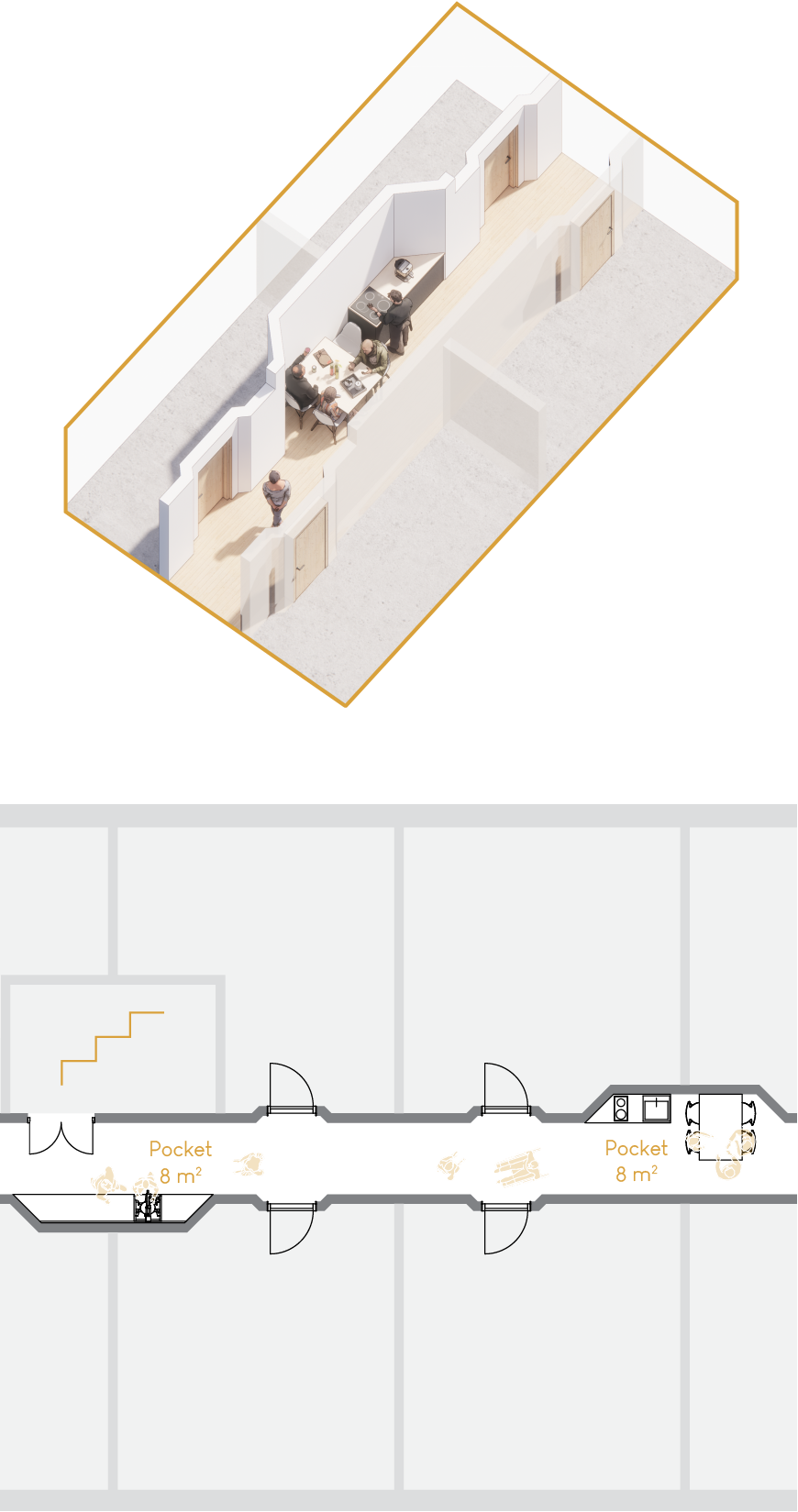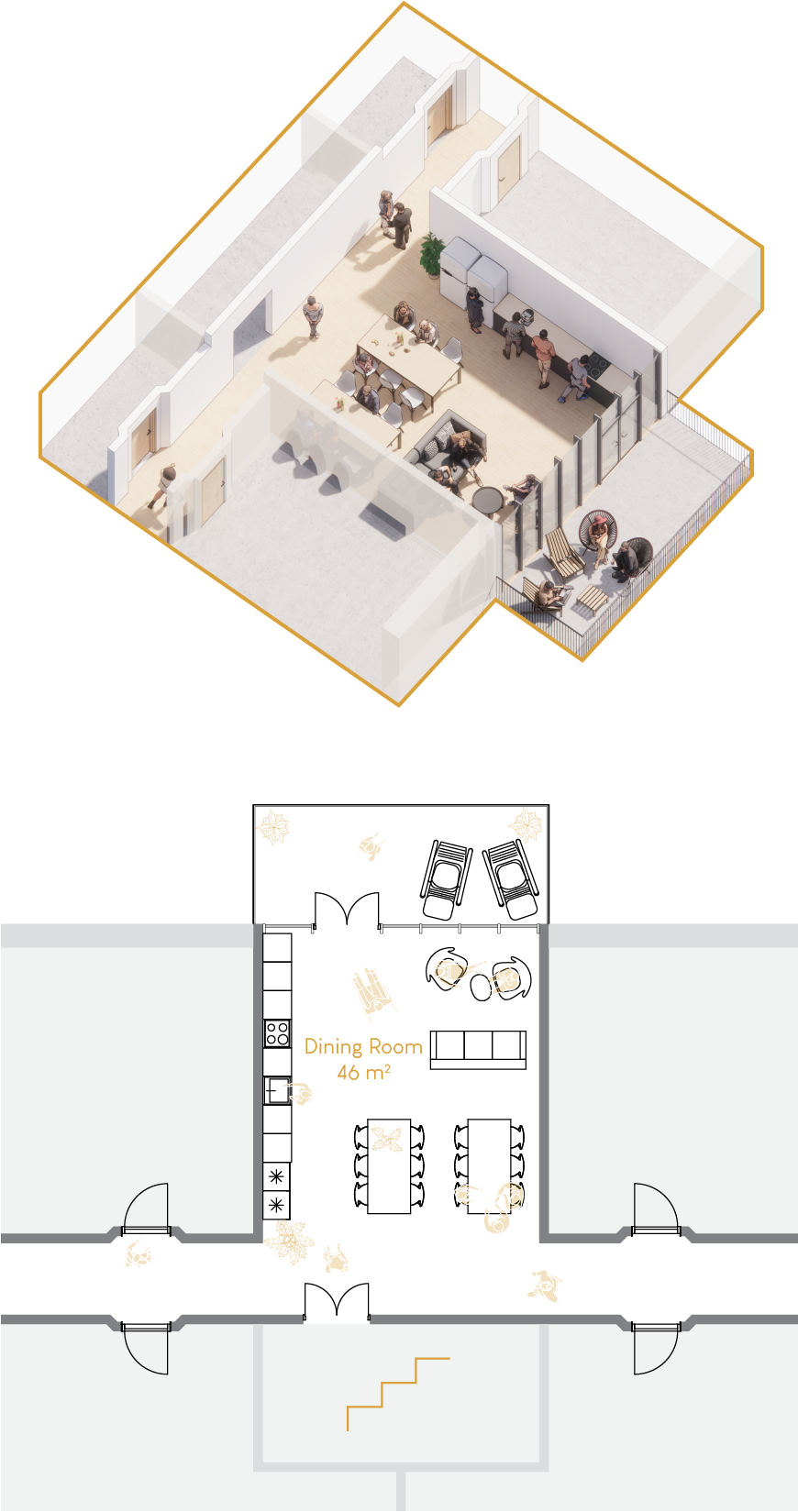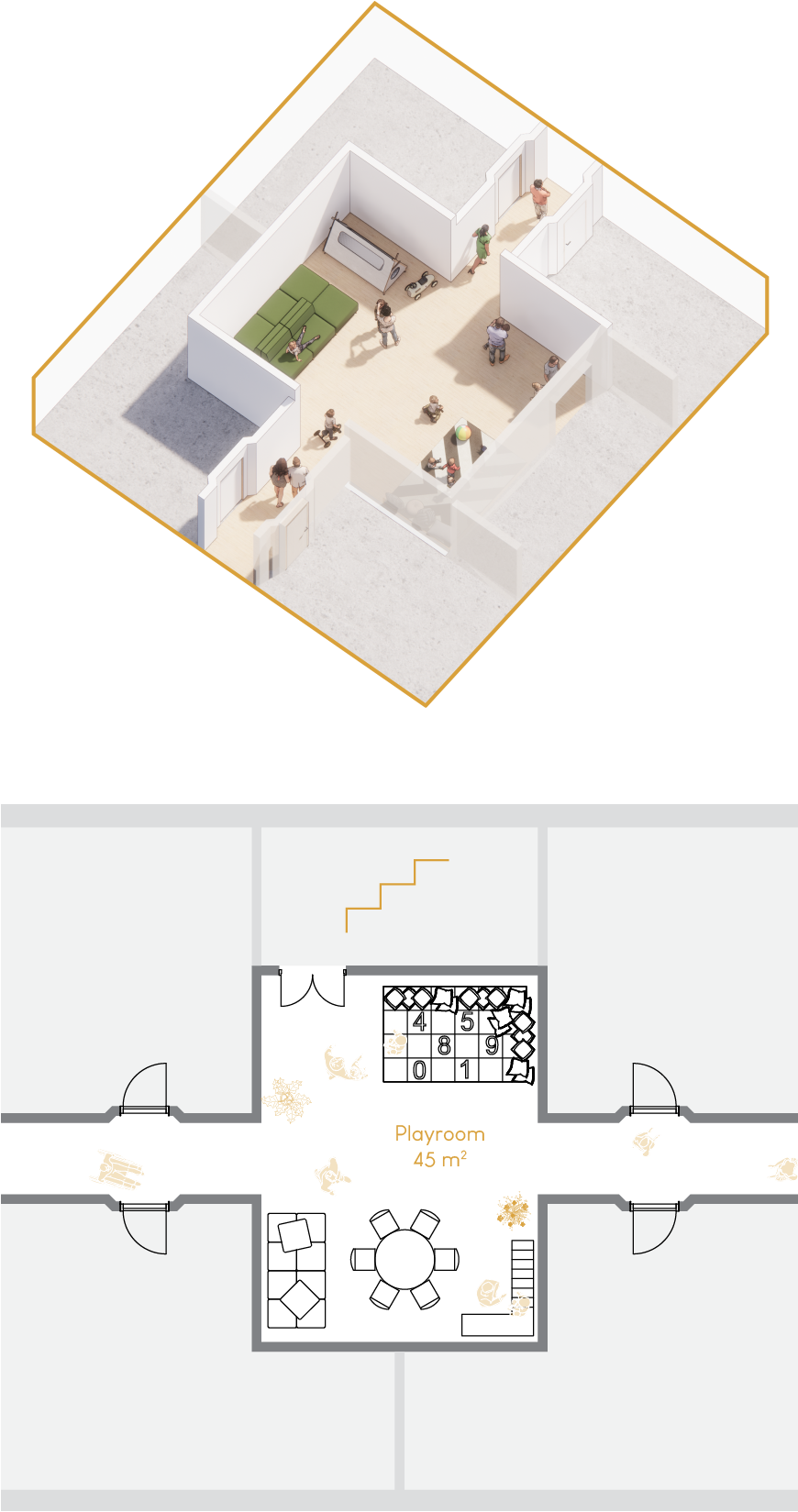Skip to the content
The Convivial Access Area
TYPE 1: POCKETS The intervention can be spread along long corridors. The space can be designed so furniture unfolds or can be moved and then the area becomes a patch of living space (Alexander, et al., 1977, p634). The impact on the rearrangement of the living unit is minimal. The attractiveness isn’t dependent on daylight. The possible functions are various, depending on the daylight, the location, or the target group. The location tangent to the walkway that people daily pass (Alexander, et al., 1977, p613). The ceiling height can define a soft border. The inter-floor connections are emphasized in the “Atrium” case.
TYPE 2: T SHAPE The intervention can be spread along long corridors. The space can be designed so furniture unfolds or can be moved and then the area becomes a patch of living space (Alexander, et al., 1977, p634). The impact on the rearrangement of the living unit is minimal. The monotony of long straight corridors is broken (Alexander, et al., 1977, p635). The attractiveness isn’t dependent on daylight. The possible functions are various, depending on the daylight, the location, or the target group. The location tangent to the walkway that people daily pass (Alexander, et al., 1977, p613). The ceiling height can define a soft border. The inter-floor connections are emphasized in the “Atrium” case.
TYPE 3: CORE The walkway is interrupted which facilitates the act of joining the socialization. The social spaces are concentrated all in one. The ceiling height can define a soft border. The interactions between floors are encouraged as the function can vary. The possible functions are various, depending on the daylight, the location, or the target group. The inter-floor connections are emphasized in the “Atrium” case. The monotony of long straight corridors is broken (Alexander, et al., 1977, p635). The attractiveness isn’t dependent on daylight. The space is equally far from every living unit. Gathers the noise in one place.
We use cookies to ensure that we give you the best experience on our website. If you continue to use this site we will assume that you are happy with it. Ok No Privacy policy You can revoke your consent any time using the revoke consent button. Revoke consent 

